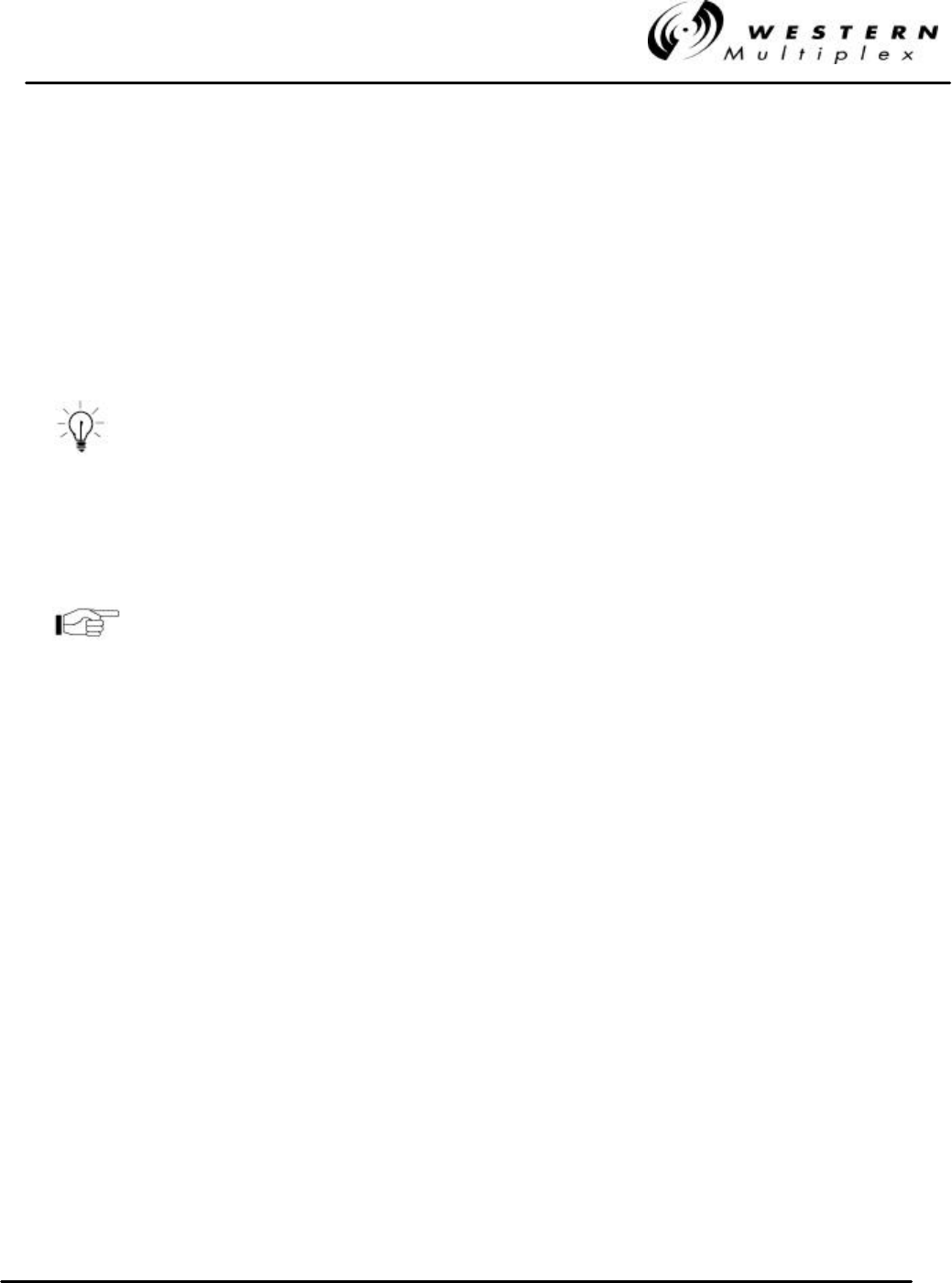User's Manual

INSTALLATION AND MAINTENANCE MANUAL
LYNX.sc E1 FAMILY
SPREAD SPECTRUM RADIOS
SEPTEMBER 1999
SECTION 4: TROUBLESHOOTING PAGE 4-21
4.8.1 Use of a Spectrum Analyzer to Evaluate Potential Interference
Connecting to the antenna and using "peak hold" on a spectrum analyzer, the spectrum between
2.4 GHz and 2.5 GHz (for 2.4 GHz radios) or 5.7 GHz and 5.9 GHz (for 5.8 GHz radios) can be
swept and any signals being received at levels above the radio’s specified threshold identified. If
potential interfering signals are found, then the LYNX.sc frequency plan can be changed to avoid a
receive channel which may contain significant interference (see Section 4.2).
For example, interference may be reduced by moving from the A1/A2 plan to the B1/B2 plan or by
swapping terminals or RF filters so that A1 becomes A2.
Signals outside the range of 2.4 GHz to 2.5 GHz (for 2.4 GHz
radios) and 5.7 GHz to 5.9 GHz (for 5.8 GHz radios) may be
ignored: they will not cause interference.
If a spectrum analyzer is not available, the RSL voltage can be used to indicate the background
noise and interference level within the receiver RF filter band when the far-end transmitter is turned
off. With the far-end radio turned off, if an RSL voltage level above the radio’s threshold level is
measured, there is potentially interference in this frequency channel.
When using a spectrum analyzer for determining the presence of
interference, very narrow resolution bandwidth settings must be
used to detect signals down to the radio’s threshold
(approximately -87 to -95 dBm, depending on radio type).










